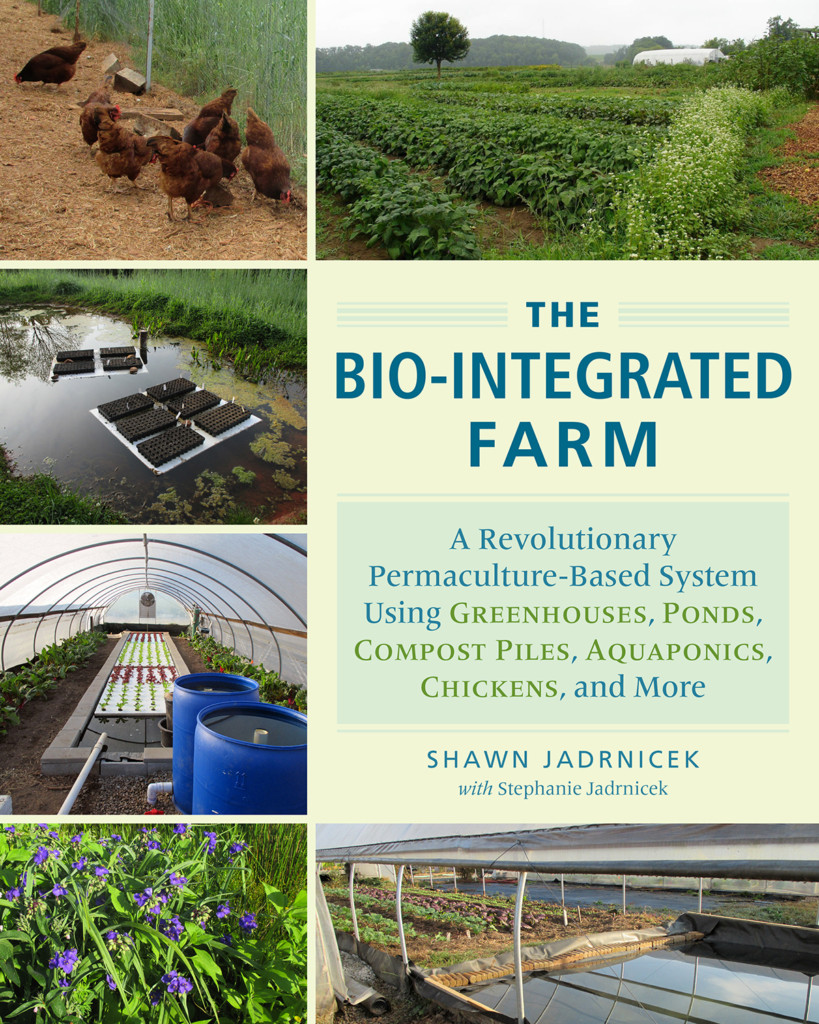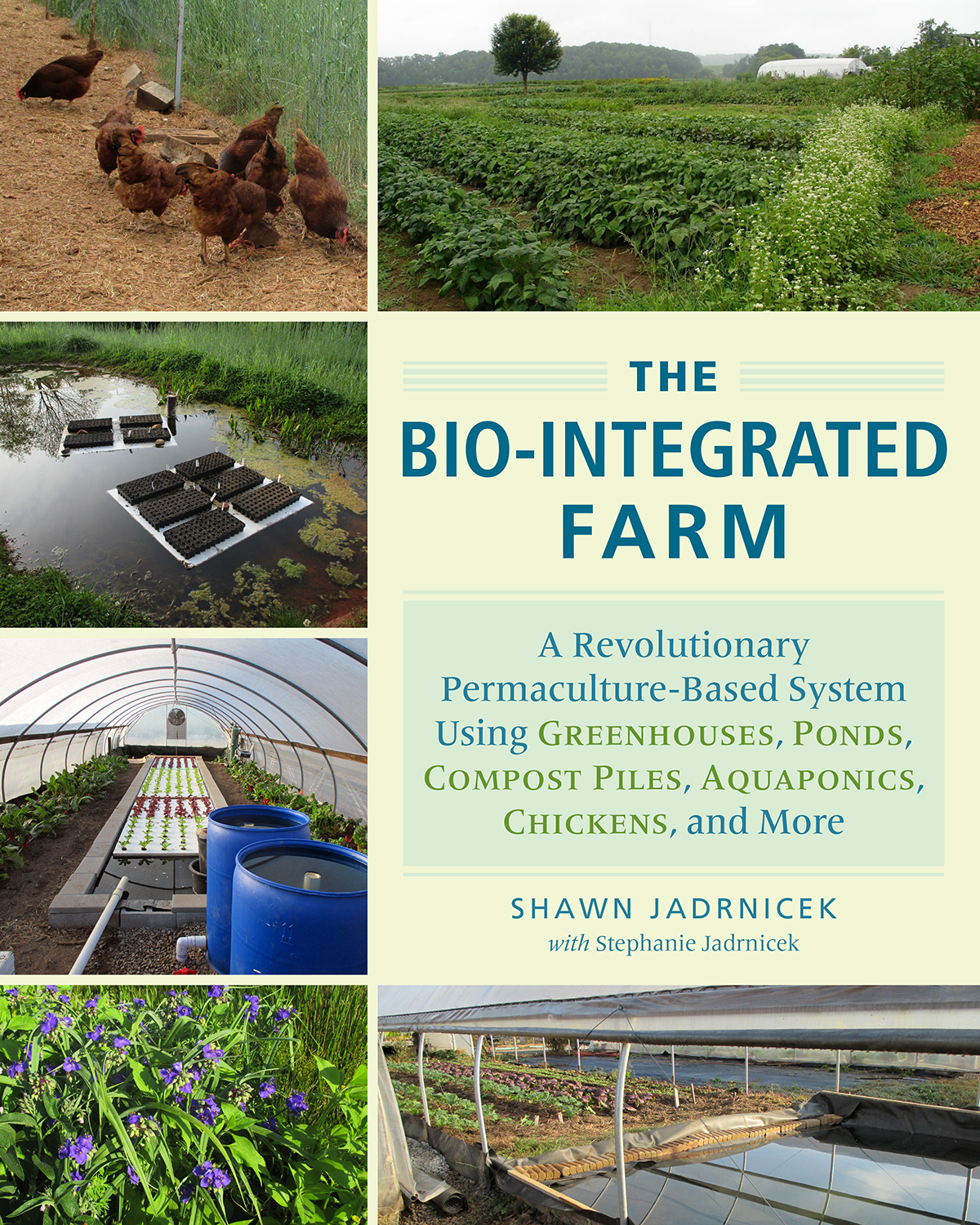
This book was hidden in my “to read” pile for too long! The title doesn’t make it clear enough that this is an authoritative text on all kinds of water management on the farm: integrating ponds, swales, ditches, water catchment, heat storage in water, irrigation, water for light reflection in winter, and fish and shrimp-farming. Chickens and black soldier flies, compost-making, and vegetable production in hoophouses and outdoors are all part of the bigger picture.
This book speaks from Shawn Jadrnicek’s experience at the Clemson University Student Organic Farm in South Carolina, and at his own homestead. The author tells us honestly when things he tried didn’t work out, and why. It is a permaculture book written for non-believers as well as the converted. It does not mystify with strange jargon. It does not make unsubstantiated claims about how things ought to be. Full disclosure: I suffer from having read too much permaculture writing that was obscure, convoluted, not backed with direct experience and written for people with a lot of time and only a small piece of land. This book is a breath of fresh air! The ideas have been tested on a farm scale, with a close eye on efficiency. It’s written for market farmers, homesteaders and serious gardeners, showing how to make best use of natural resources to help feed the world. Each technique has to have at least seven functions to qualify for inclusion in the author’s farming practices and the book.
You may not want to follow all of the author’s methods. I, for one, am not going to grow hydroponically. (I doubt that fully nutritious food can be grown without soil, with just the nutrients we know to feed in.) You may not want a hoophouse that is almost all pond. But you may be very happy to find a book that describes how to build a hoophouse on sloping land; very happy to learn how to grade your land to move rainwater away from where you don’t want it to sit, to where you do want it to improve growth of your pastures. You may be very happy to learn how to use a pond to grow minnows (tadpoles in the non-minnow season) to feed chickens. You may like the idea of filling your hoophouse with sweet potatoes or cowpeas in summer to act as a “smother crop,” dealing with weeds while keeping the soil alive. Perhaps you’d like to try freshwater prawn (large shrimp) farming? The regulations are easier than for fish-farming. Giant river prawns can weigh as much as a pound, they are easy to process and cook, and they sell at a good price.







